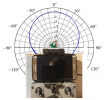This afternoon whilst playing with the video settings on my drone, Ie: shutter speed and frame rates.
Hovering at about 70 to 80 feet up directly above my head in my back garden/yard, I flew the drone back behind me only about 15 to 20 feet and completely lost signal between the drone and the controller, the screen went grey and connection was lost.
I rapidly spun around (heart thumping) to look up and there it was still at 70 to 80 foot up and 15 to 20 foot away, as I spun around so the drone was now in front of me again and the signal came almost instantly and control was gained.
Later while enjoying a beer, I was puzzled as to why this should happen with the drone in such close proximity, here are some thoughts,
I put this to you just as a thought and will be more than happy to have others thoughts on this.
My drone a Mini 2 with the standard controller, both controller and drone were about 75% charged. I am using the latest DJI Fly App 1. 4.12, I have a Lenovo M10 Gen 2 tablet as my screen.
I have read on here that the ideal for signal strength is 'Line of Sight' or VLOS for the best transmission and distance, now the transmitter and receiver ariel on my controller with a phone in the place is completely visible and uncovered at all times whether the drone is in front or behind you, because the top of the ariel is above the phone, with a 10inch tablet with a metal extension bracket in place, the top of the areil is at least 3 inches below the top edge of the tablet, effectively shielding the ariel, another thing to consider is the back of the tablet is metal, could this metal back be acting as a partial shield? Now throw in possible interference from the tablets Wi Fi signal into the mix could this be what caused my signal loss until I turned around 180 degrees and the ariel is now visible to the drone.
Hovering at about 70 to 80 feet up directly above my head in my back garden/yard, I flew the drone back behind me only about 15 to 20 feet and completely lost signal between the drone and the controller, the screen went grey and connection was lost.
I rapidly spun around (heart thumping) to look up and there it was still at 70 to 80 foot up and 15 to 20 foot away, as I spun around so the drone was now in front of me again and the signal came almost instantly and control was gained.
Later while enjoying a beer, I was puzzled as to why this should happen with the drone in such close proximity, here are some thoughts,
I put this to you just as a thought and will be more than happy to have others thoughts on this.
My drone a Mini 2 with the standard controller, both controller and drone were about 75% charged. I am using the latest DJI Fly App 1. 4.12, I have a Lenovo M10 Gen 2 tablet as my screen.
I have read on here that the ideal for signal strength is 'Line of Sight' or VLOS for the best transmission and distance, now the transmitter and receiver ariel on my controller with a phone in the place is completely visible and uncovered at all times whether the drone is in front or behind you, because the top of the ariel is above the phone, with a 10inch tablet with a metal extension bracket in place, the top of the areil is at least 3 inches below the top edge of the tablet, effectively shielding the ariel, another thing to consider is the back of the tablet is metal, could this metal back be acting as a partial shield? Now throw in possible interference from the tablets Wi Fi signal into the mix could this be what caused my signal loss until I turned around 180 degrees and the ariel is now visible to the drone.
Attachments
Last edited:




![20211013_180622[1].jpg](/data/attachments/136/136524-6ab1f62b0bfa9f94b364b28582950a07.jpg?hash=arH2Kwv6n5)
![20211013_181008[1].jpg](/data/attachments/136/136525-27c6a3c233b787a2c08059764190b217.jpg?hash=J8ajwjO3h6)









